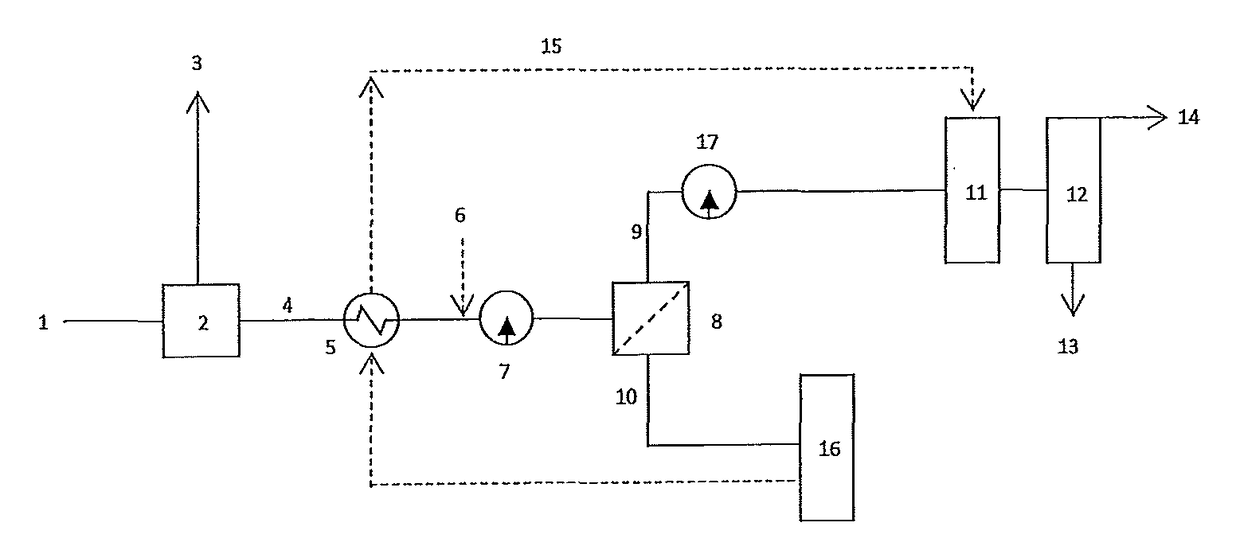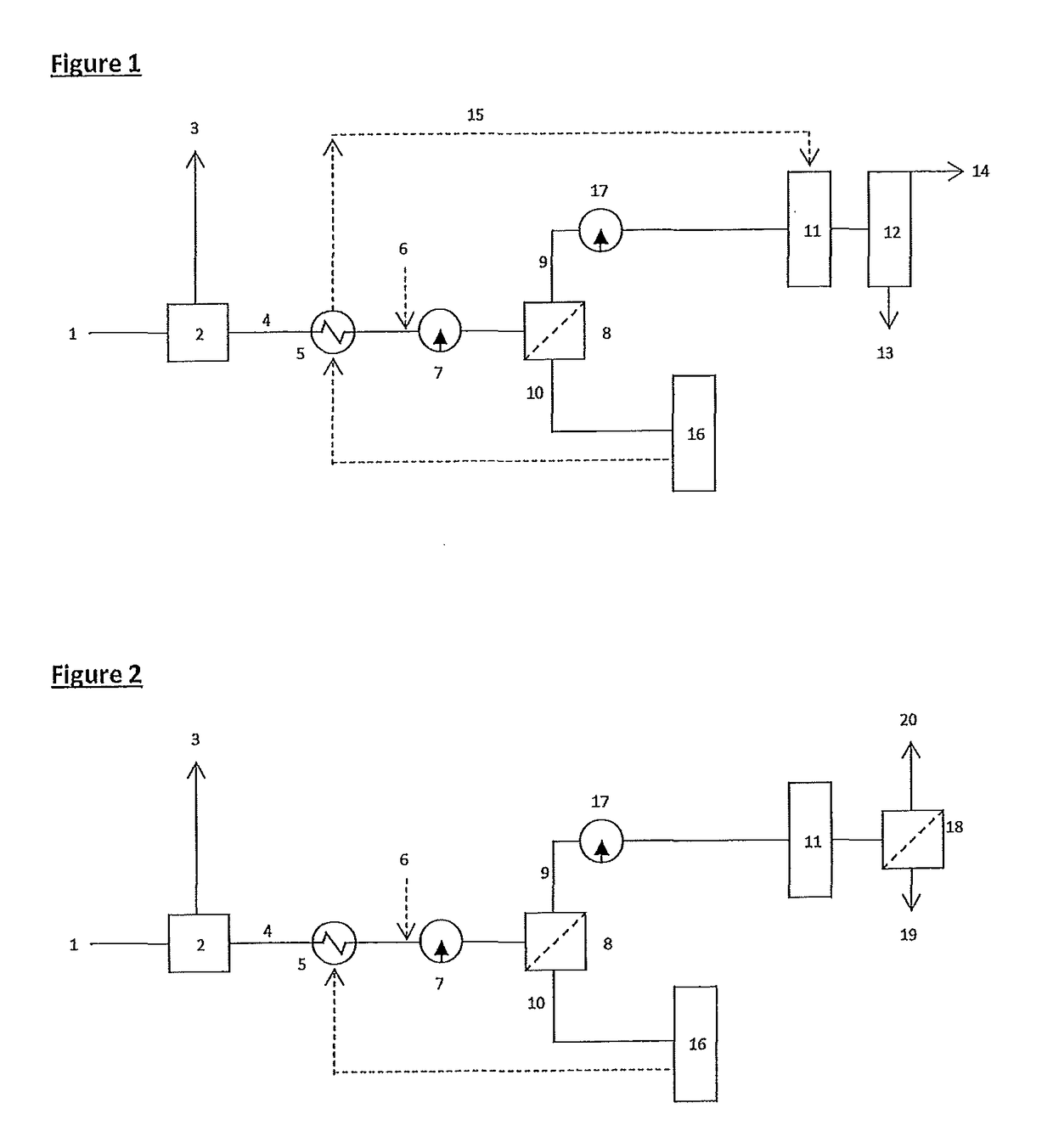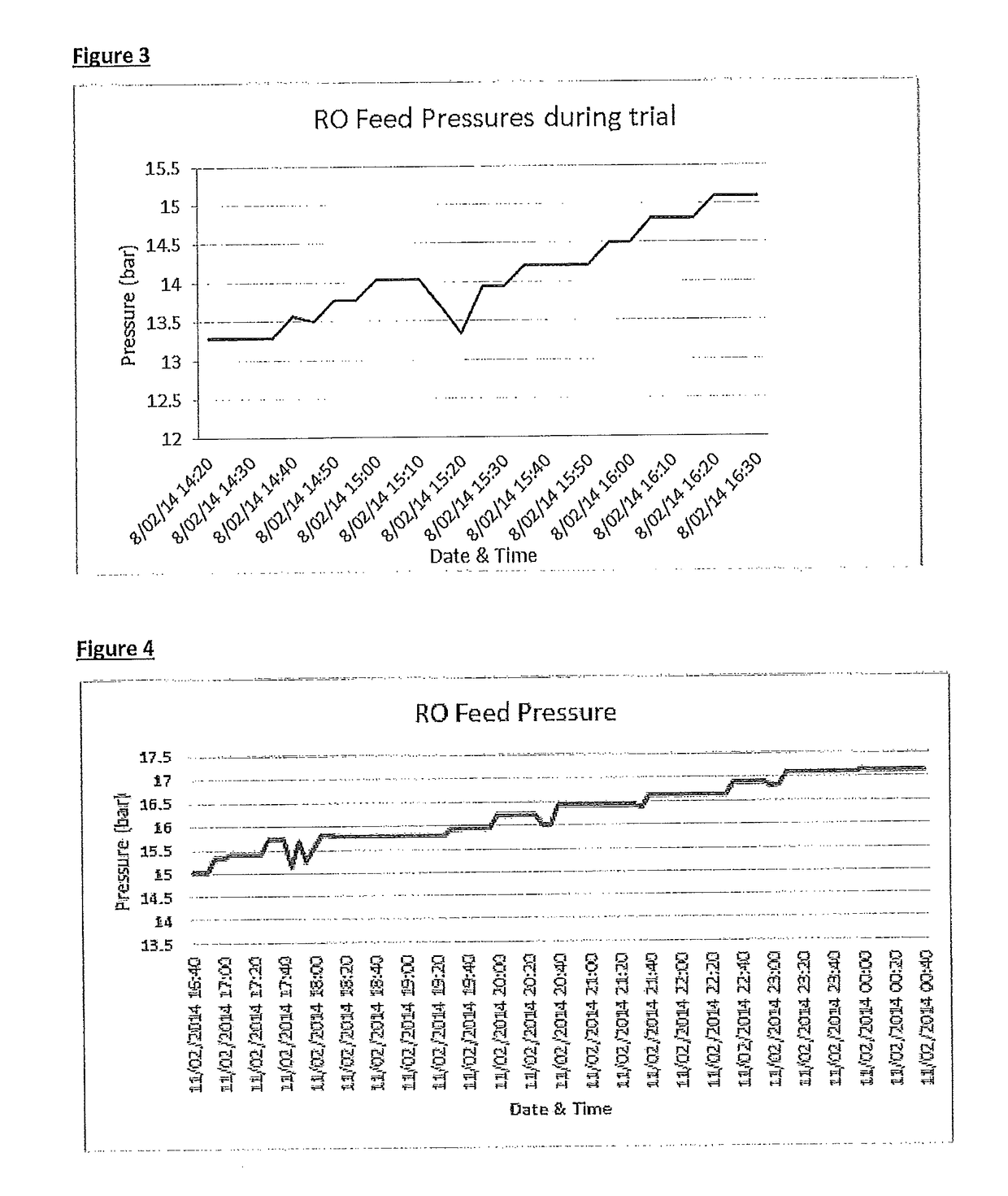Silica products from geothermal fluids by reverse osmosis
a geothermal fluid and silica technology, applied in reverse osmosis, water/sludge/sewage treatment, inorganic chemistry, etc., can solve the problems of reducing flow, affecting the efficiency of energy recovery, affecting the effect of ph reduction
- Summary
- Abstract
- Description
- Claims
- Application Information
AI Technical Summary
Benefits of technology
Problems solved by technology
Method used
Image
Examples
example 1
Use of Method Described in WO2009 / 079047 for Extraction of Silica in >275 ppm Silica Solutions
[0278]Separated geothermal water (SGW) was introduced into a system at 60° C. comprising a reverse osmosis unit.
[0279]Reverse Osmosis membrane arrangement: RO #1: Nano RO #2: Nano RO #3: Nano
TABLE 2Operating conditions for example 1Feed (l / s)Recovery (%)Inlet T (° C.)pH1.350607.5
[0280]The feed pressure increased immediately and the trial was ended after 20 minutes. The increase in pressure indicated that the membranes became fouled.
[0281]In an attempt to recover the membranes after this first SGW run, both a high pH and low pH clean in place (CIP) was carried out. The trial was repeated using elements from a different manufacturing batch but these new membranes also became blocked. It was concluded that the membranes were irreparably blocked by scaling and formation of amorphous silica. New membranes were required to be installed. It was concluded that the low inlet temperature resulted in ...
example 2
Caustic Dosing to Increase Solubility of Silica
[0282]An alternate method was trialled which involved the use of a curing tank and caustic dosing prior to entering the reverse osmosis unit.
[0283]A 7000 L curing tank was installed to receive the geothermal fluid from the feed heat exchanger (i.e. after 5 in FIG. 1). The geothermal fluid from the outlet of the feed heat exchanger 5 fed into the curing tank where it cured for one hour before entering the RO unit.
[0284]Sodium hydroxide dosing to increase the pH was used in order to promote silica solubility and colloid formation so that it would pass through the RO membranes. It was also believed that bigger particles (silica colloids as opposed to dissolved silica) would be better rejected by the RO membranes, and so less silica would be transmitted into the RO permeate stream. Also by displacing the dissolved / monomeric silica from solution this would remove the ‘reactive’ silica thereby making silica scaling of the RO membranes less li...
example 3
[0302]Pre-Heating
[0303]Modifications were made to the equipment of example 1 and 2 to accommodate an RO vessel pre-heating procedure. With reference to FIG. 1, the preheating procedure is as follows:[0304]1. Geothermal fluid entered the system through the main feed line 4, passed through the feed heat exchanger 5 and through an optional diverted feed 15 to a curing tank 11. This curing tank was open to drain and disposed of the geothermal fluid.[0305]2. The preheating stream used for this RO pre-heating process was received from a permeate collection tank 16 which contained either permeate or supplied town water.[0306]3. The preheating stream passed from the feed heat exchanger 5 at approximately 70° C. to the main system prior to the inlet pump 7 which fed into the main process path for the RO unit 8.[0307]4. The RO pre-heating procedure was operated for approximately one hour.
[0308]The pre-heating procedure effectively warmed up the pilot plant prior to introducing hot geothermal ...
PUM
 Login to View More
Login to View More Abstract
Description
Claims
Application Information
 Login to View More
Login to View More - R&D
- Intellectual Property
- Life Sciences
- Materials
- Tech Scout
- Unparalleled Data Quality
- Higher Quality Content
- 60% Fewer Hallucinations
Browse by: Latest US Patents, China's latest patents, Technical Efficacy Thesaurus, Application Domain, Technology Topic, Popular Technical Reports.
© 2025 PatSnap. All rights reserved.Legal|Privacy policy|Modern Slavery Act Transparency Statement|Sitemap|About US| Contact US: help@patsnap.com



